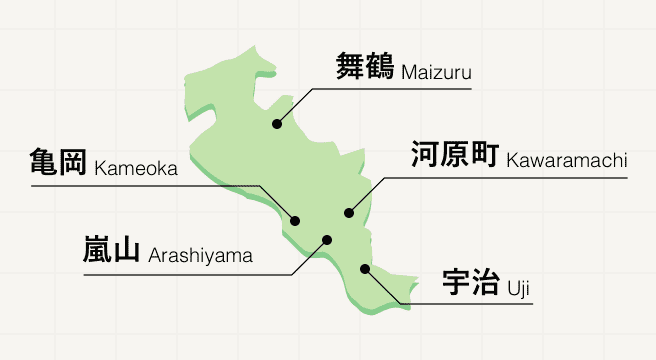Historical Monument Spots in Ichijo-ji Temple / Shugakuin Area
Area
-
-
Kyoto
-
-
Kyoto
-
-
Ichijo-ji Temple / Shugakuin
-
- All areas
- Around Gion
- Around Kiyomizu-Dera Temple
- Around Okazaki
- Around Ginkaku-Ji Temple
- Ichijo-ji Temple / Shugakuin
- Around Fushimi Inari
- Around Kyoto Station
- City Center
- Around Kyoto Imperial Palace
- Around Nishijin
- Around Kamigamo
- Around Kinkaku-Ji Temple
- Uzumasa / Hanazono
- Arashiyama / Sagano / Takao
- Around Mt. Hiei
- Ohara / Kurama / Kifune
- Katsura / Nishiyama
- Yamashina / Daigo
- Around Fushimi
- Around Uji
- Joyo / Yawata
- Kyotanabe / Kizugawa
- Kameoka / Nantan
- Maizuru / Miyazu
-
Ichijo-ji Temple / Shugakuin

Category


-
- Shugakuin Imperial Villa
- Travel / Tourism
- Kyoto Kyoutoshi Sakyou-ku Shugakuin Kabayashi
- An Imperial villa built in the mid-17th century by Emperor Go-Mizunoo. Located at the foot of Mt. Hiei, three gardens, deemed the lower, middle, and upper tea houses, are distributed around the spacious grounds and connected by pine-line walks. The lower tea house garden is entered via the front main gate and has a tea house called the Jugetsukan built in the sukiya-zukuri (tea arbor) style. The adjoining middle tea house garden has a simple tea house built in the irimoya-zukuri (gabled, hipped roof) style, but its magnificently decorated reception hall is truly a sight to behold, as well as the decorative tea alcove shelving called “Kasumi-dana (shelf of mist),” The shelf is considered one of the three most treasured shelves in Japan. The large upper tea house garden is dotted with tea houses surrounding a central pond. The view from the Rin-un-tei tea house built on the mountainside is particularly spectacular.
Kyoto Areas

Its wooden tea houses, shuffling geisha, and spiritual sights have seen Kyoto hailed as the heart of traditional Japan, a world apart from ultramodern Tokyo. Despite being the Japanese capital for over a century, Kyoto escaped destruction during World War II, leaving behind a fascinating history which can be felt at every turn, from the fully gold-plated Kinkakuji Temple down to traditional customs such as geisha performances and tea ceremonies, which are still practiced to this day.
Best of Kyoto
Search by Region
-
- Hokkaido / Tohoku
- Hokkaido
- Aomori
- Iwate
- Miyagi
- Akita
- Yamagata
- Fukushima
-
- Kanto
- Ibaraki
- Tochigi
- Gunma
- Saitama
- Chiba
- Tokyo
- Kanagawa
-
- Koshinetsu / Hokuriku
- Niigata
- Toyama
- Ishikawa
- Fukui
- Yamanashi
- Nagano
-
- Tokai
- Gifu
- Shizuoka
- Aichi
- Mie
-
- Kinki
- Shiga
- Kyoto
- Osaka
- Hyogo
- Nara
- Wakayama
-
- Chugoku
- Tottori
- Shimane
- Okayama
- Hiroshima
- Yamaguchi
-
- Shikoku
- Tokushima
- Kagawa
- Ehime
- Kochi
-
- Kyushu / Okinawa
- Fukuoka
- Saga
- Nagasaki
- Kumamoto
- Oita
- Miyazaki
- Kagoshima
- Okinawa












